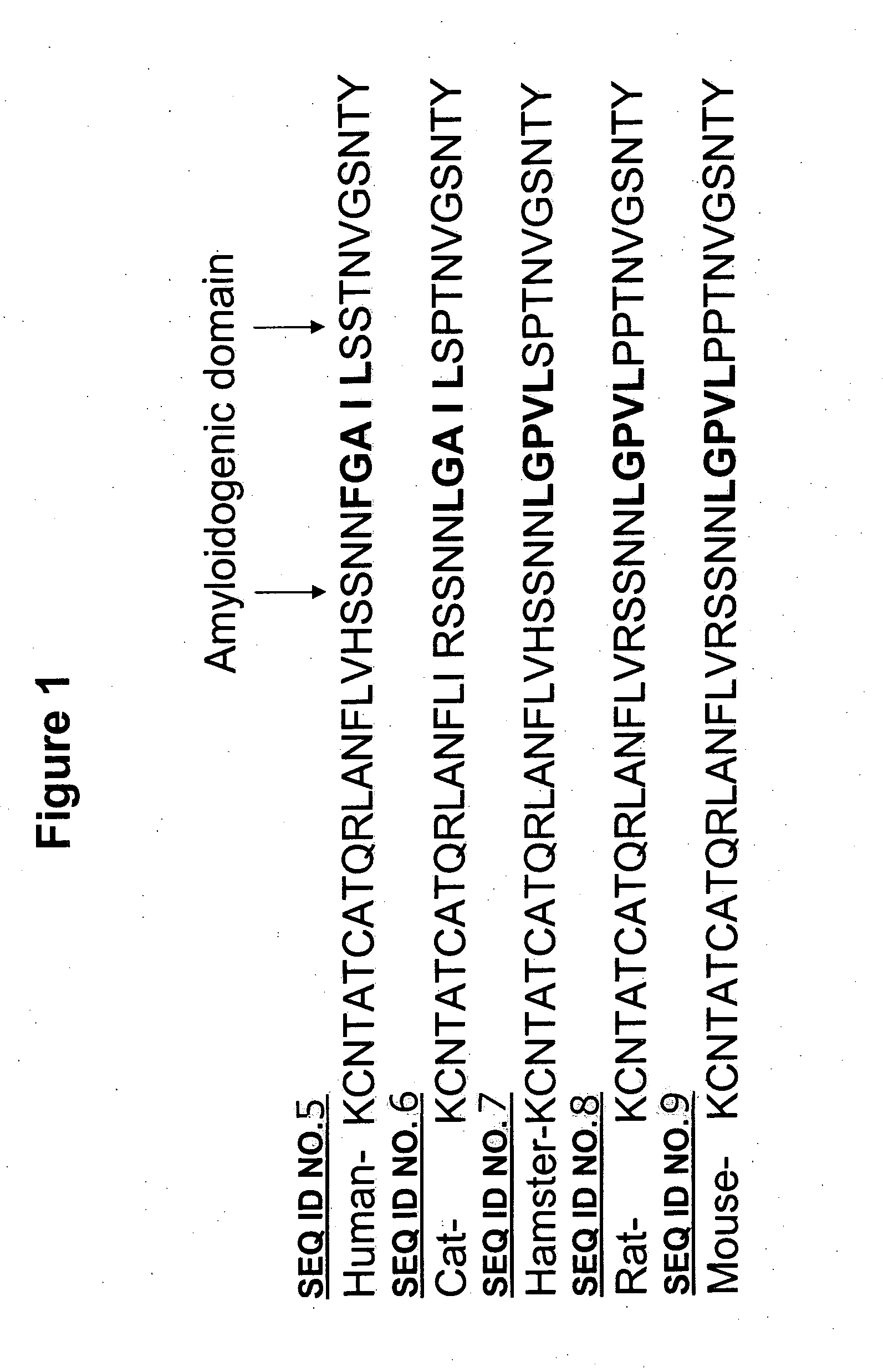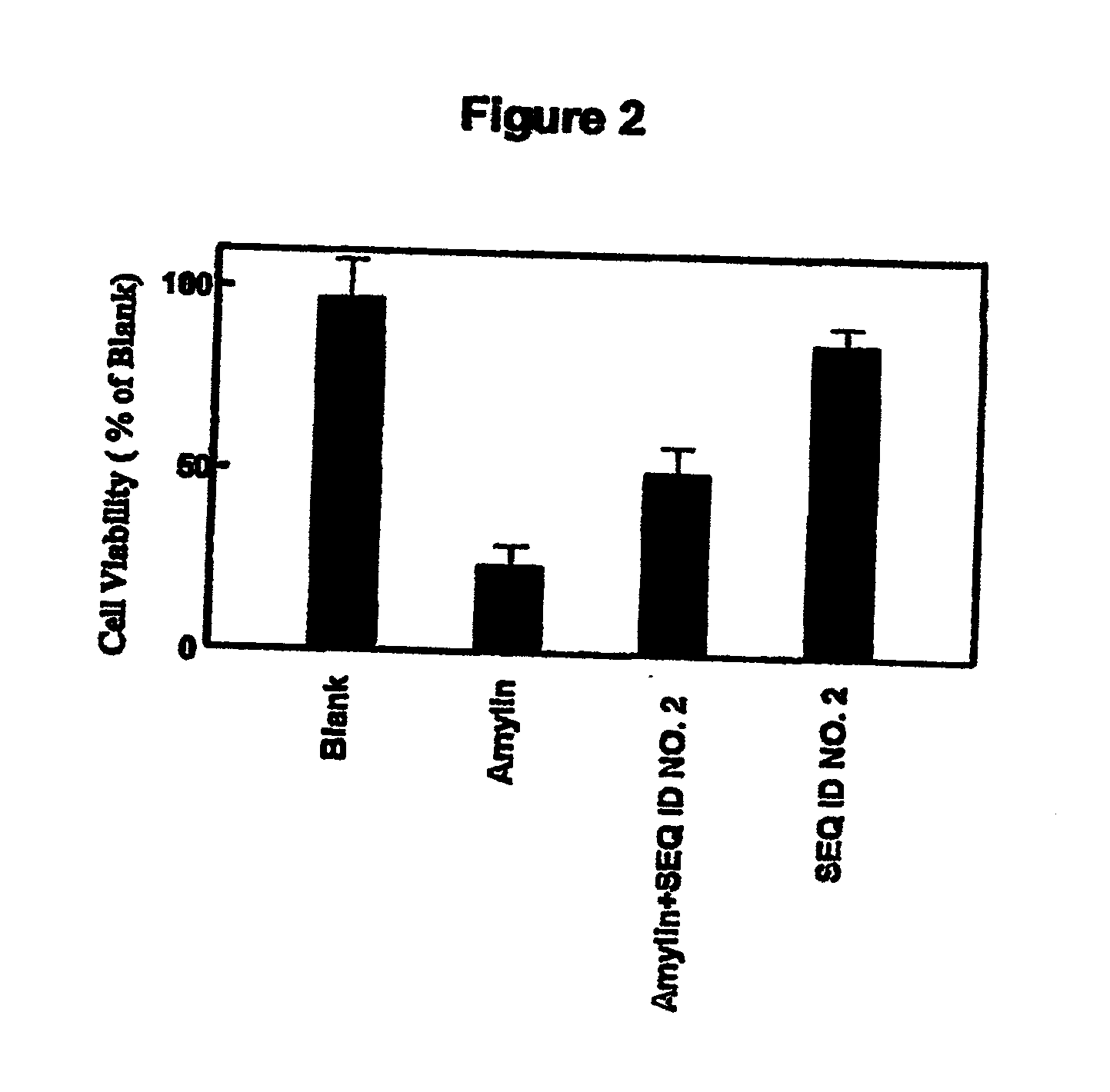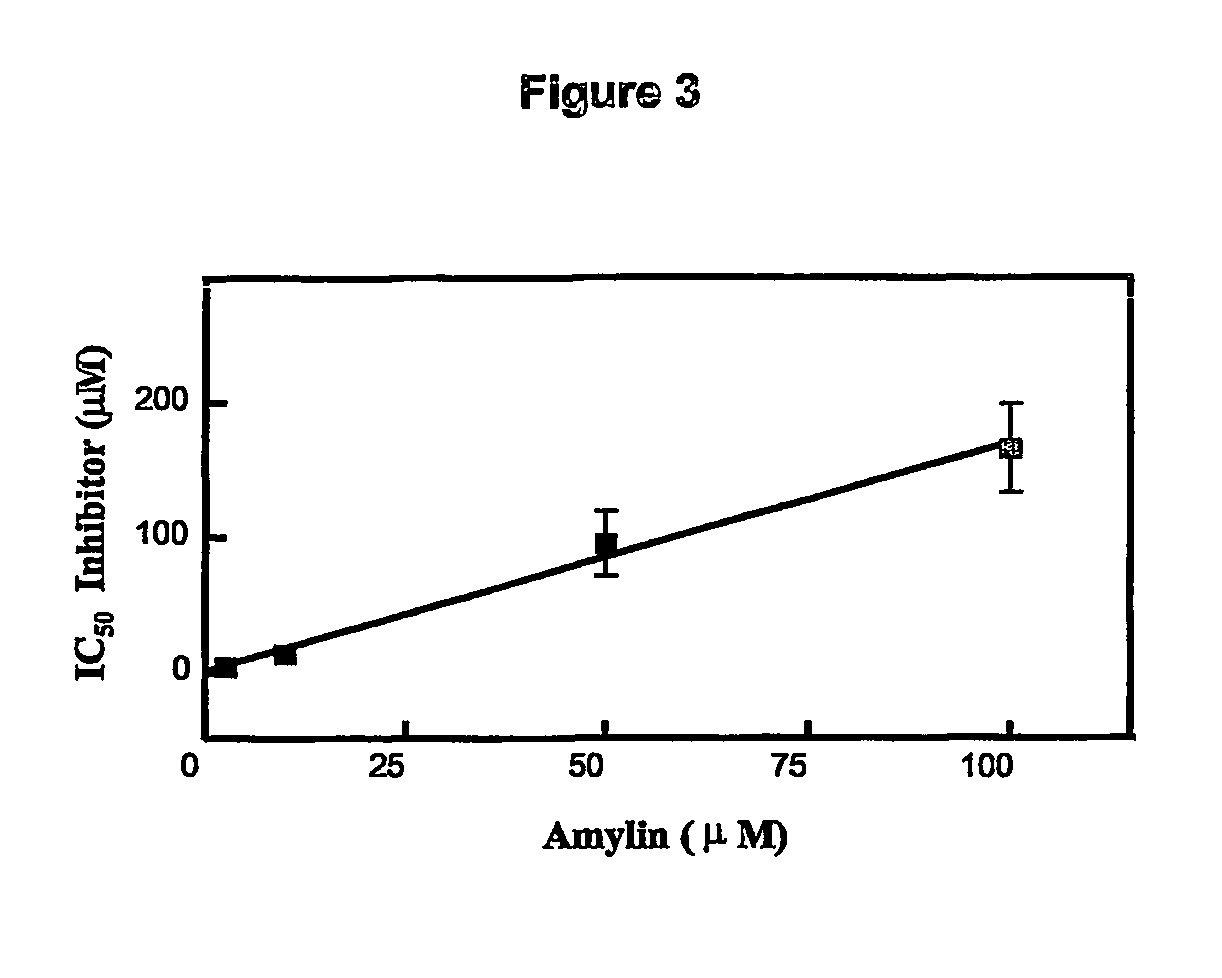Amylin aggregation inhibitors and use thereof
a technology of amylin and inhibitors, which is applied in the direction of peptide/protein ingredients, drug compositions, and metabolic disorders, can solve the problems of forming amyloid fibrils that deposit, and achieve the effect of reducing or inhibiting amylin aggregation and reducing or inhibiting amyloid formation
- Summary
- Abstract
- Description
- Claims
- Application Information
AI Technical Summary
Benefits of technology
Problems solved by technology
Method used
Image
Examples
example 1
Synthesis of Compounds of the Invention
[0080] Inhibitor peptides were synthesized in solid phase by NEOSYSTEM. Peptides were purified by HPLC and purity (>95%) evaluated by peptide sequencing and laser desorption mass spectrometry. Stock solution of the peptides were prepared in water / 0.1% trifluoric acid and stored lyophilized in aliquots at −70° C. Concentration of the stock solution was estimated by amino acid analysis.
[0081] The chemical derivatization reactions were done during the synthesis by NEOSYSTEM using standard procedures.
[0082] The molecular weights measured by mass spectrometry are listed in Table I below:
TABLE ISEQ ID No.MW (g / mol)2619366047341072011705127491369914790157761673317618
example 2
Biological Assays
In Vitro Peptide Solubility Assay:
[0083] Solubility of peptides of the invention was obtained using a qualitative assay where the peptide was dissolved in Tris buffer, pH 7.4 at 1, 5, or 10 mg / ml, vortexed briefly, and then centrifuged at 16,000 g for 30 min. The presence of a pellet in the bottom of the tube indicates that the peptide is not soluble at the respective concentration.
[0084] The data in Table II below indicate that peptides of the invention are highly soluble:
TABLE IISEQ ID No.Solubilty10μg / ml11mg / ml122mg / ml4>10mg / ml3>10mg / ml2>10mg / ml
In Vitro Assays of Activity:
[0085] The activity of compounds of the invention in inhibiting the formation of aggregated amylin fibrils can be tested by absorbance changes.
[0086] Amyloid formation was quantitatively evaluated by measuring the amount of bound Congo red (Cb) to the fibrils using the formula below as reported (Klunk et al., 1999):
Cb (μM)=(A541 / 47,800)−(A403 / 68,300)−(A403 / 86,200)
wherein A541 and A403 ...
PUM
| Property | Measurement | Unit |
|---|---|---|
| Solubility | aaaaa | aaaaa |
| Solubility | aaaaa | aaaaa |
| Solubility | aaaaa | aaaaa |
Abstract
Description
Claims
Application Information
 Login to View More
Login to View More - R&D
- Intellectual Property
- Life Sciences
- Materials
- Tech Scout
- Unparalleled Data Quality
- Higher Quality Content
- 60% Fewer Hallucinations
Browse by: Latest US Patents, China's latest patents, Technical Efficacy Thesaurus, Application Domain, Technology Topic, Popular Technical Reports.
© 2025 PatSnap. All rights reserved.Legal|Privacy policy|Modern Slavery Act Transparency Statement|Sitemap|About US| Contact US: help@patsnap.com



